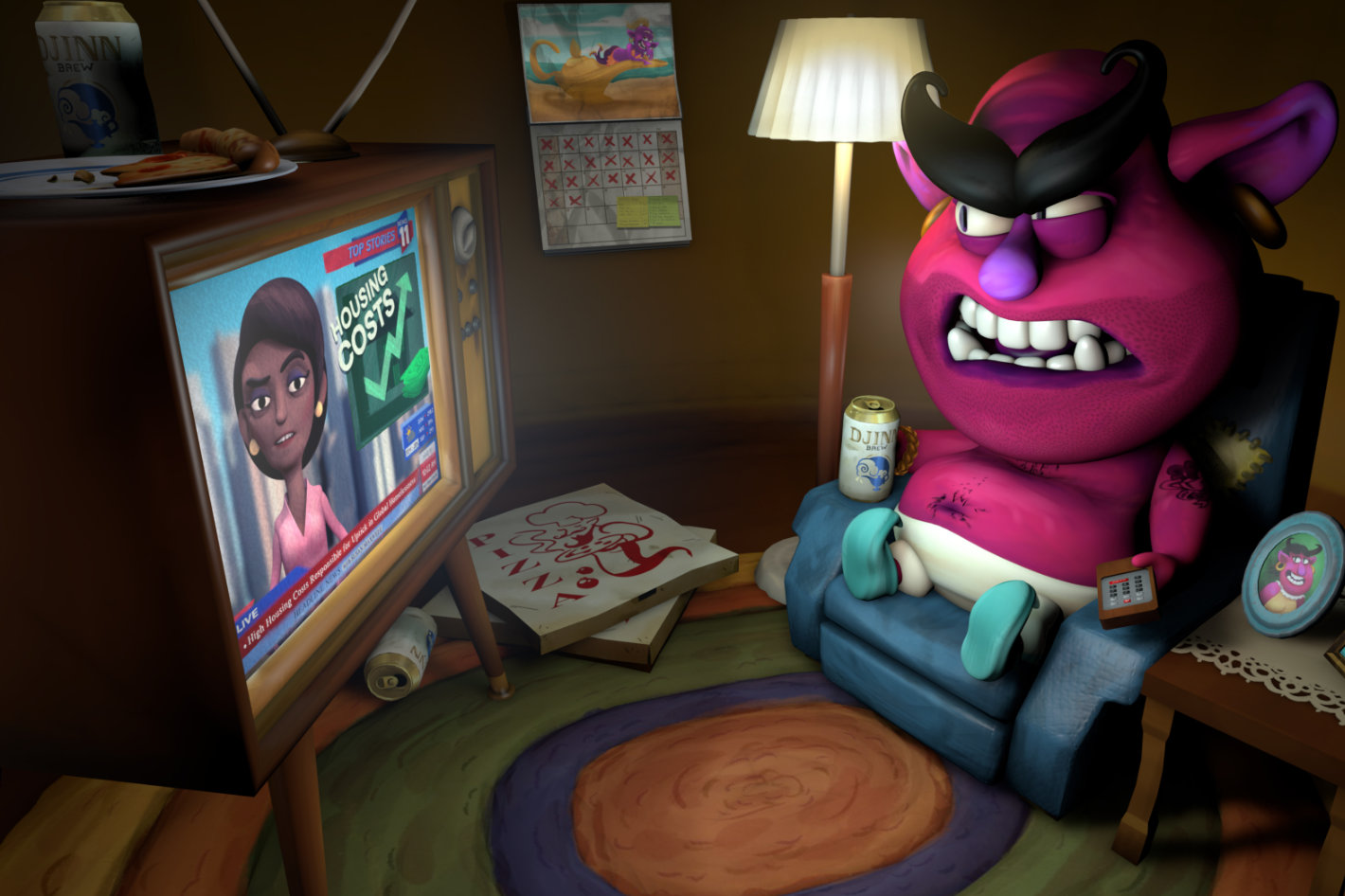
The animated short Ajax All Powerful is now officially available, but we’ve mentioned it before, as far back as 2020, when we covered the new VR productions titles available at Venice VR Expanded. Among the 44 projects from 24 countries was Ajax All Powerful, the title now available from the Meta Store. As I wrote then, it’s a pity that VR products are only available for certain platforms, limiting their audience.
Now that I’ve said it, let’s look at Ajax All Powerful, which is co-produced by easyAction, VeeR and Detona Cultura. Available on the Meta Store, the animated comedy follows double-crossing genie Ajax, who, in a dark twist, collects souls in exchange for granting wishes. That is until he meets his match when a little girl, who rubs his lamp, comes prepared with her very own lawyer to help negotiate.
Starring Henry Winkler (Happy Days, Barry) as the foul-mouthed Ajax and Chris Parnell (Rick and Morty, Saturday Night Live) as the no-nonsense lawyer, the story uses interactivity, movement and performance to create a perfect state of engagement in which the audience is fully focused on the story. According to the team behind it, the film removes the barrier of the fourth wall to provide viewers with a uniquely immersive perspective in which they experience the events and emotions more acutely through the viewpoint of a protagonist. It’s just a pity that other type of barriers – as noted above – stop people from being able to share the experience…
Written and directed by award-winning VR filmmaker Ethan Shaftel, Ajax All Powerful has been shown in various film festivals and other events since 2020. Ethan Shaftel, who directs film, immersive, and interactive projects, is known for his work in VR, which includes the comedies Kaiju Confidential (Sundance 2019), Space Buddies (Tribeca 2019) and Extravaganza (Tribeca 2017), as well as interactive installations for brands and musicians. His background is in traditional film, as well as media for immersive spaces, performances, and theater.
Cinema 4D and Zbrush, from Maxon, were used in the production of animated virtual reality short, Ajax All Powerful, and the company is proud of having its name added to the movie. Given the cutting-edge developments in the VR space over the last few years, Maxon CEO David McGavran believes VR may revolutionize filmmaking and storytelling in much the same way the addition of color and sound did in the past.
David McGavran added that “VR offers artists a plethora of opportunities for content creation and filmmakers need to be extremely clever and imaginative in how they enable the viewer to interact with the film. Ethan has been honing this very craft for years and is pioneering truly unique and immersive experiences in virtual reality. Maxon is committed to providing the artistic community with necessary tools that are primed for working in this rapidly developing medium.”
“When you make a movie in Mixed Reality, it’s really a whole world, so there is so much more animation to do,” Ethan Shaftel explains. “All of the characters are alive all of the time, so you have to be really brutal about where you put your production time, polish and energy. The great thing about using Cinema 4D in VR production is that you can use it in several different ways and with Maxon it is such a straightforward process to export files into VR.”
ZBrush, the industry standard tool for digital sculpting and painting, was primarily used for character design, and all the animation was created in Cinema 4D, Maxon’s professional 3D modeling, animation, simulation and rendering software. With Cinema 4D, it was easy to plan and block out action sequences during the writing and animation process, as well as revisit and edit where necessary.
In addition to producing the previz animatics, the VR 360 video tools in Cinema 4D allowed Shaftel to render out frames of 360 video from different perspectives, which were then taken into Adobe Premiere to be edited into a VR storyboard. During the full production process, Shaftel and his collaborators brought the dialogue soundtrack into Cinema 4D to rig and animate the characters in order to match the actors’ vocal performances to their characters’ actions.
“This film is the first time I’ve been able to put together all the components of my vision for how I think narrative VR can work,” Shaftel says. “I’m hoping that some of the techniques I’m playing with can transcend a single project and apply to other VR narratives and become part of the grammar of VR storytelling. That’s the ongoing project.”
